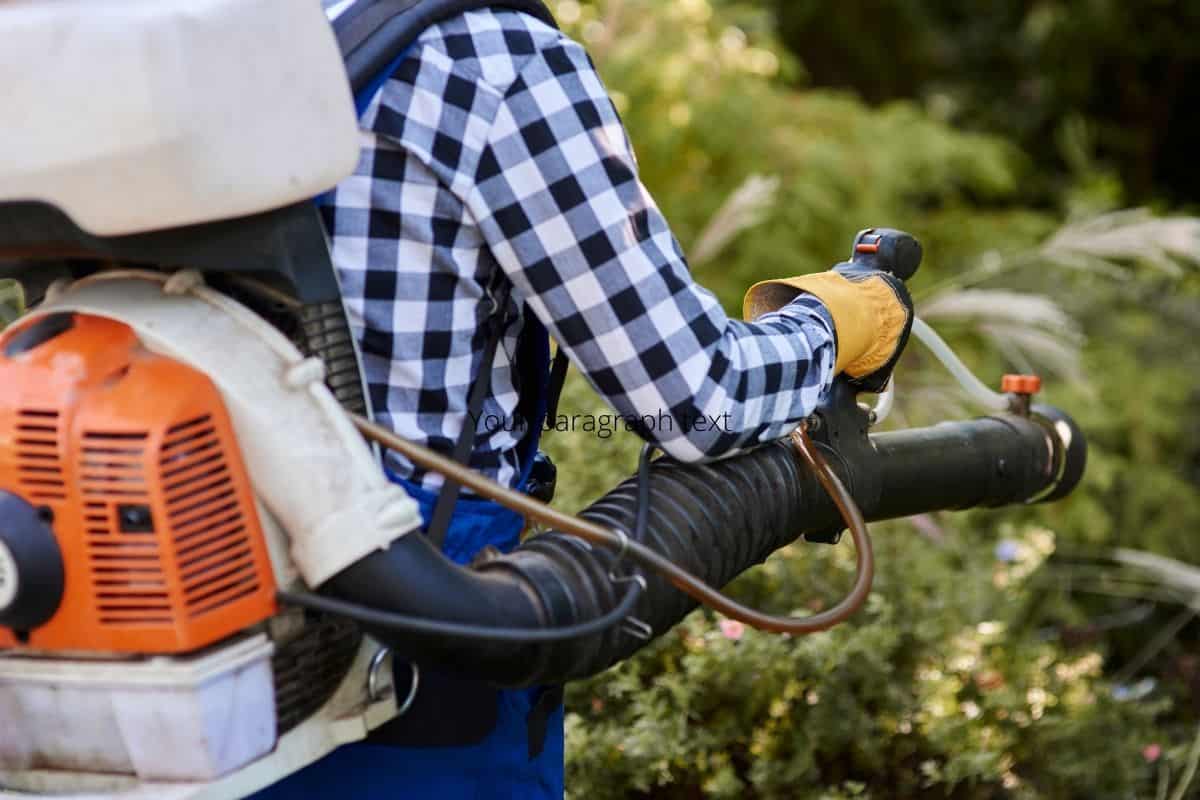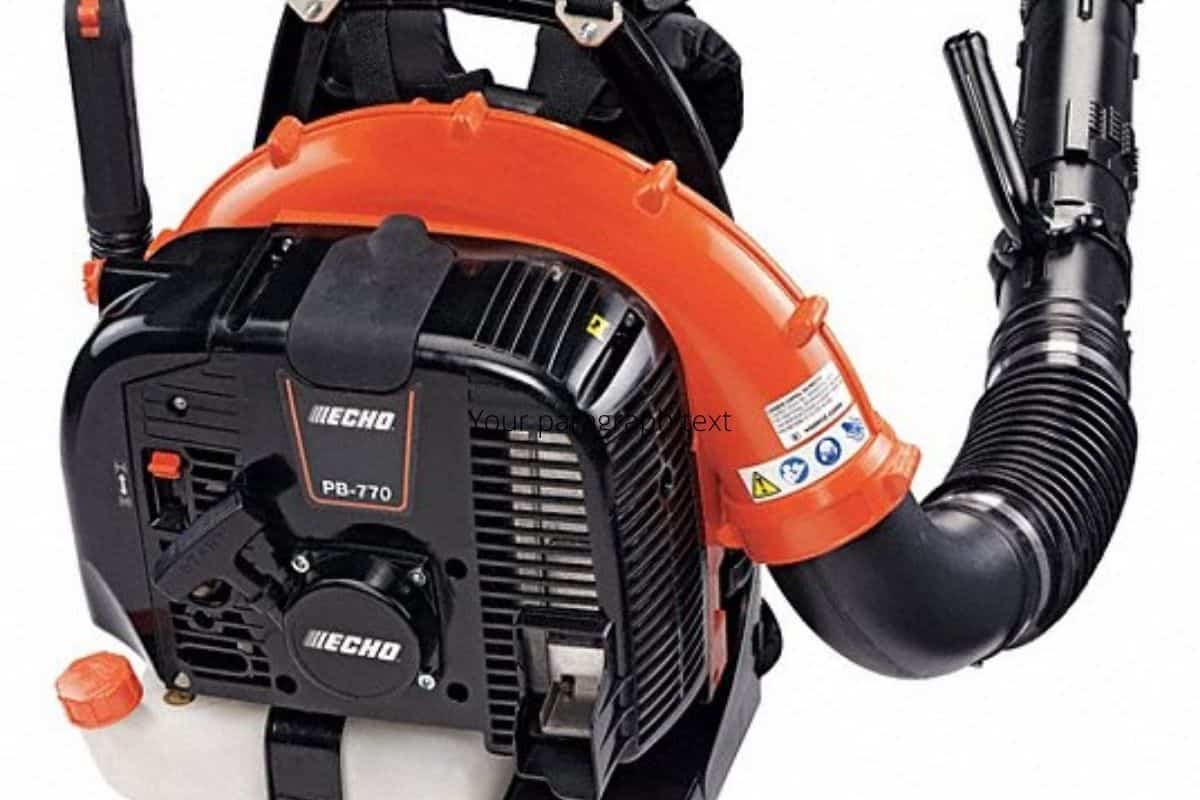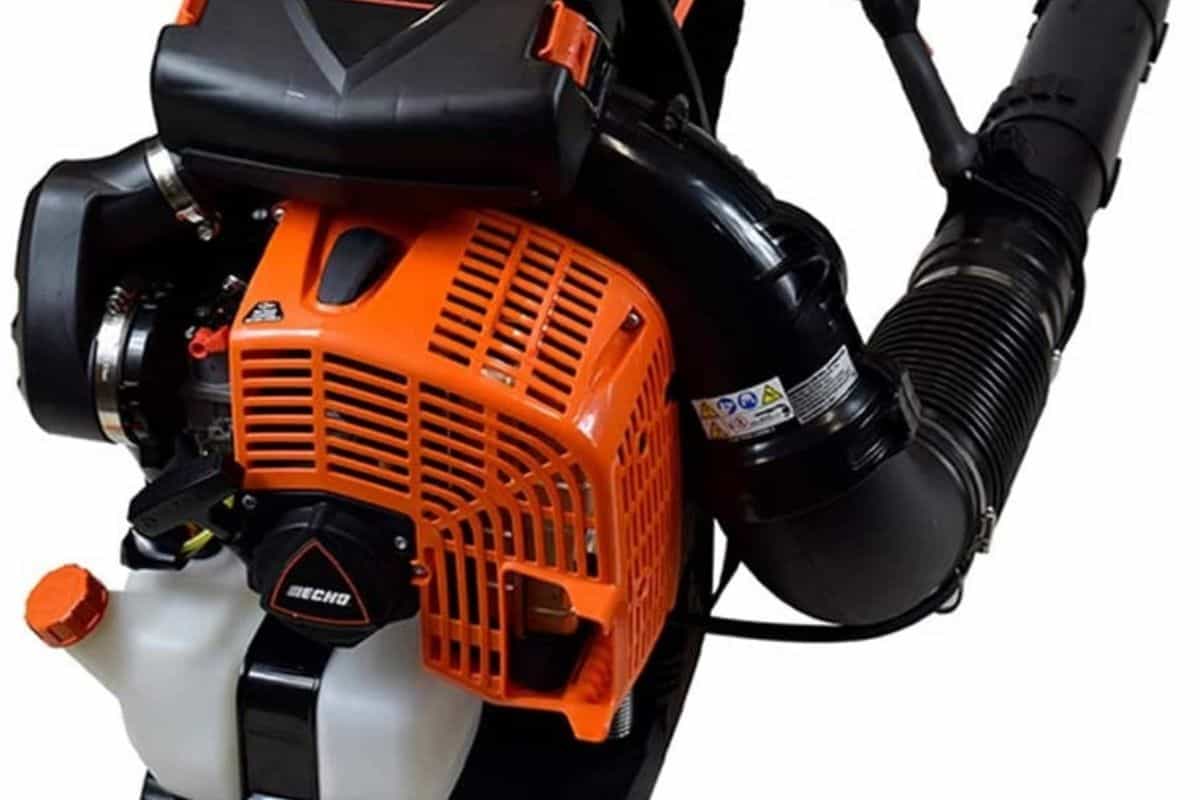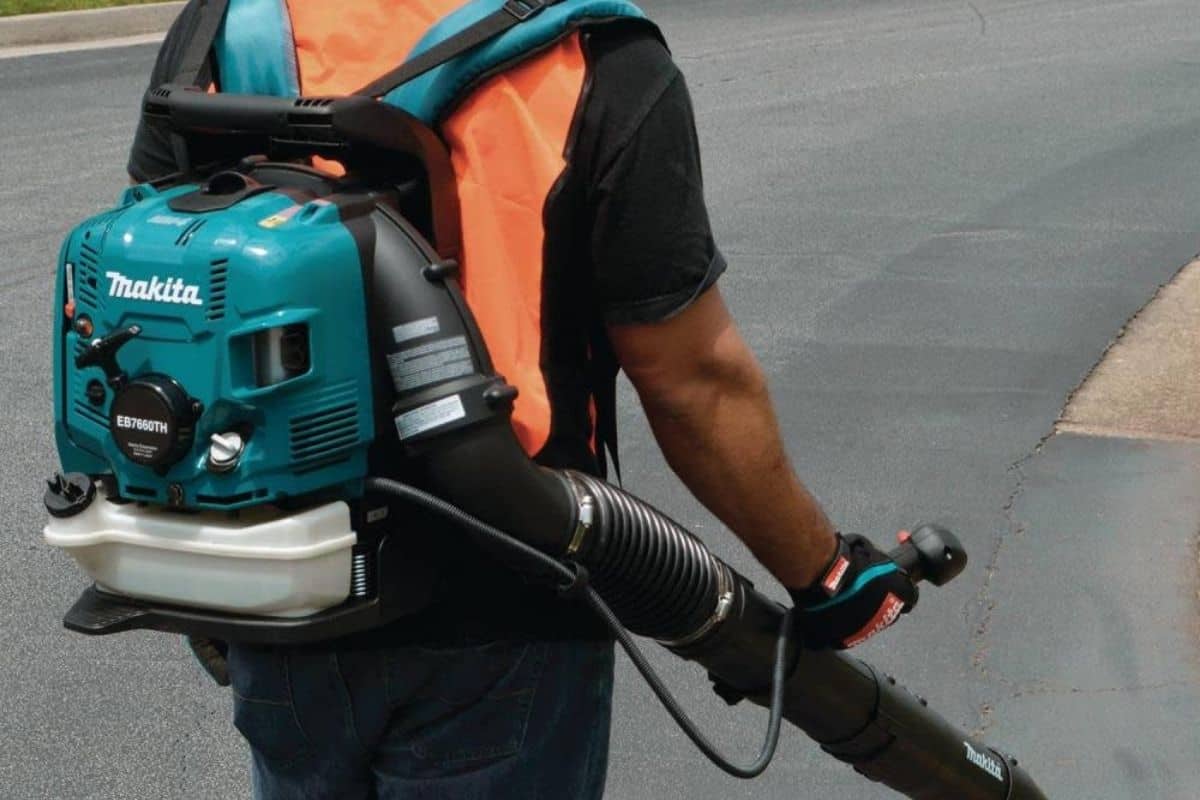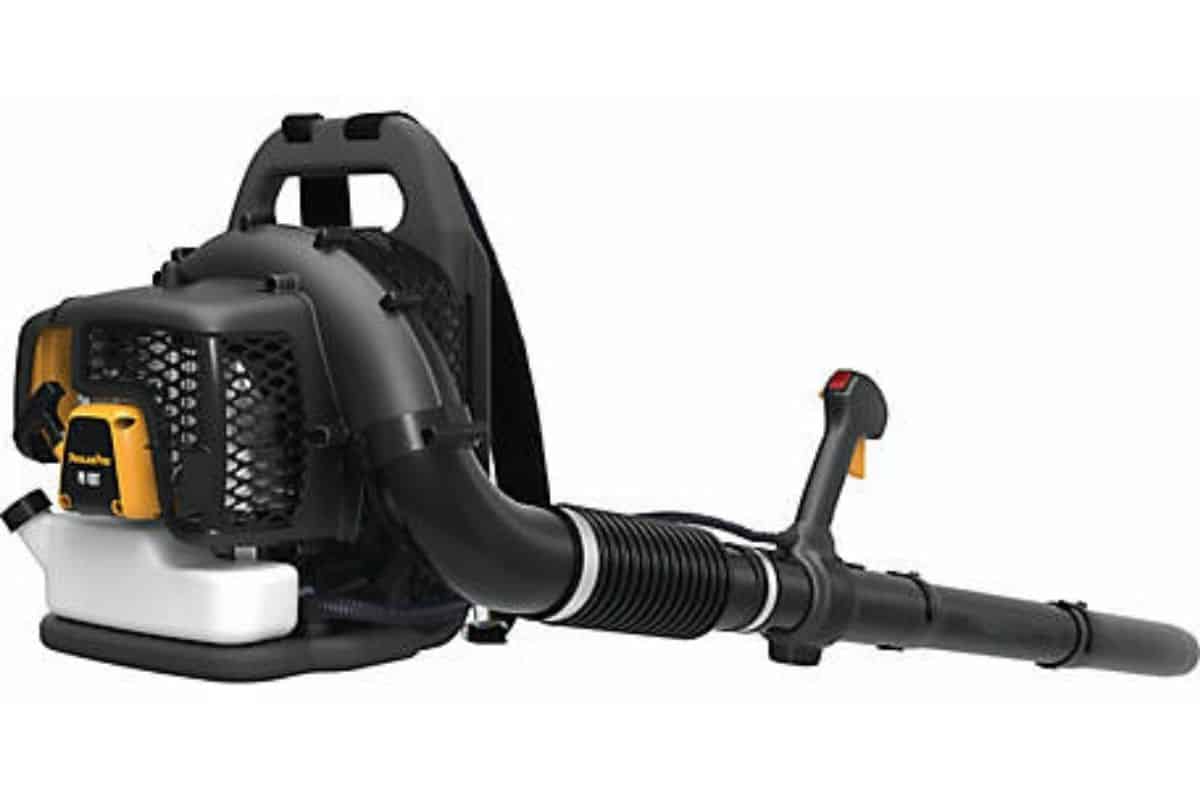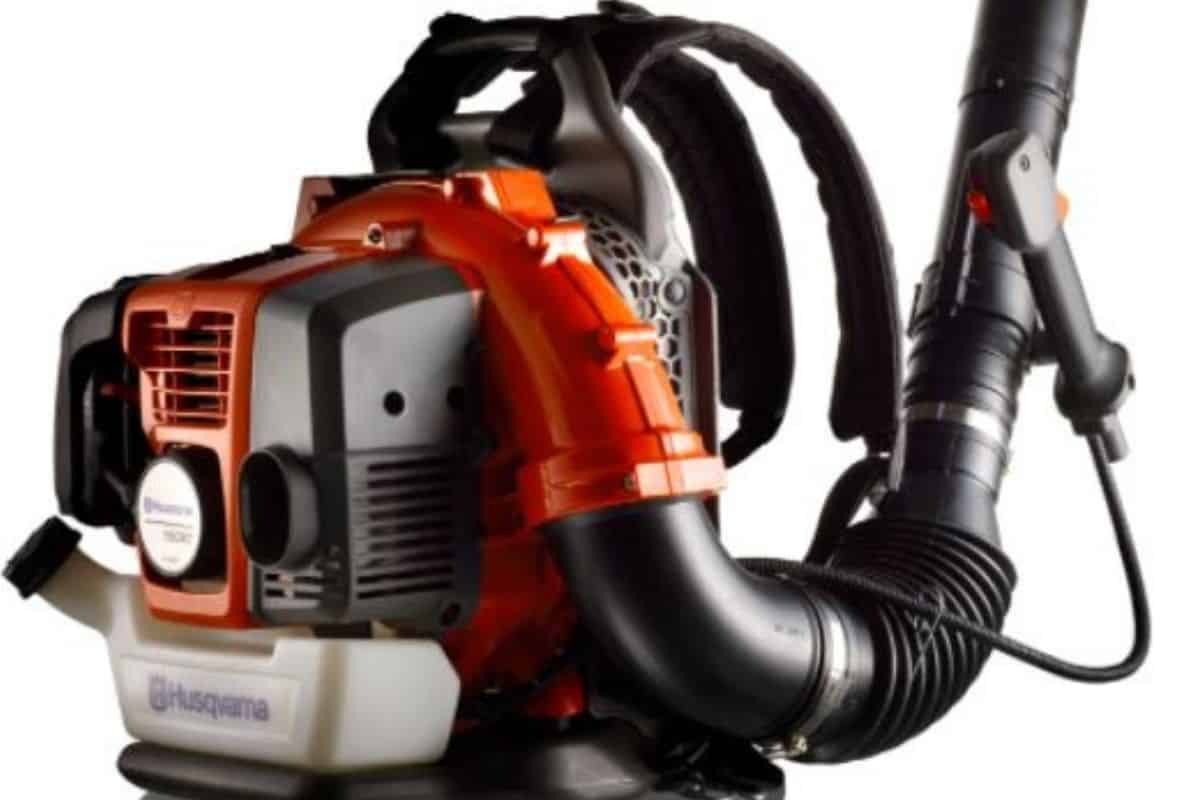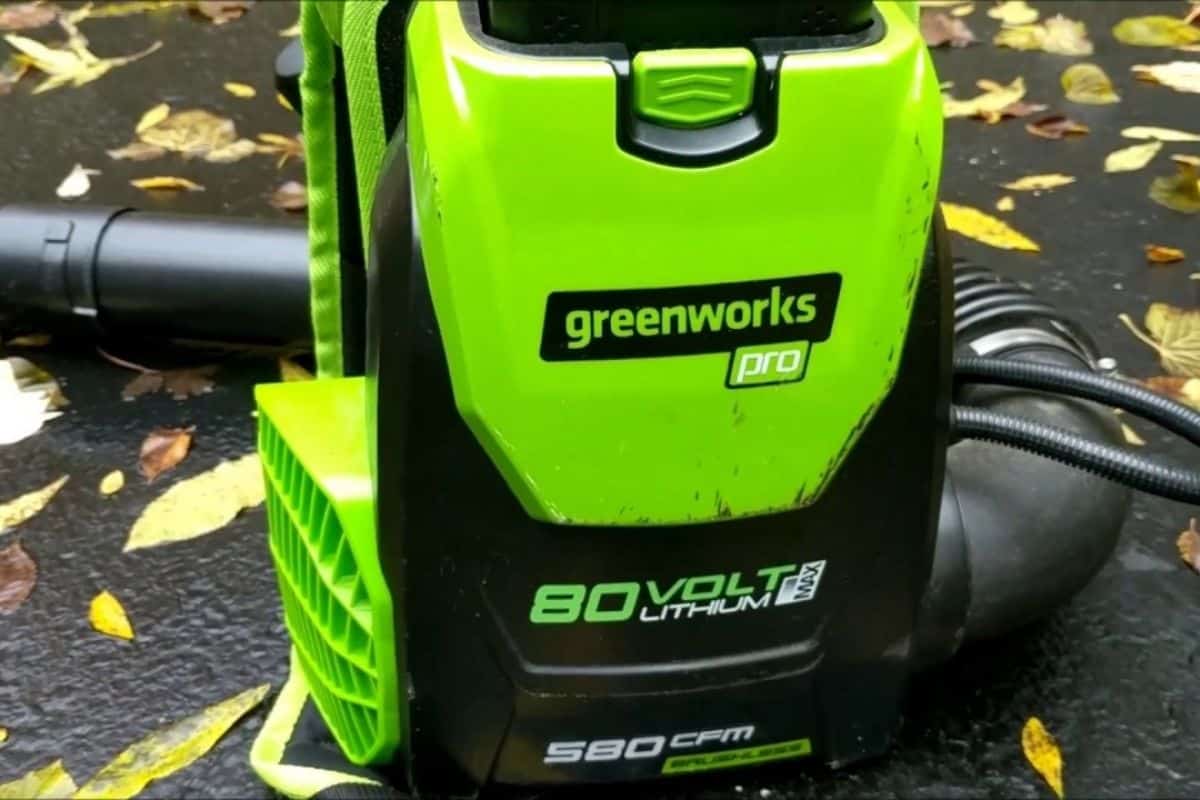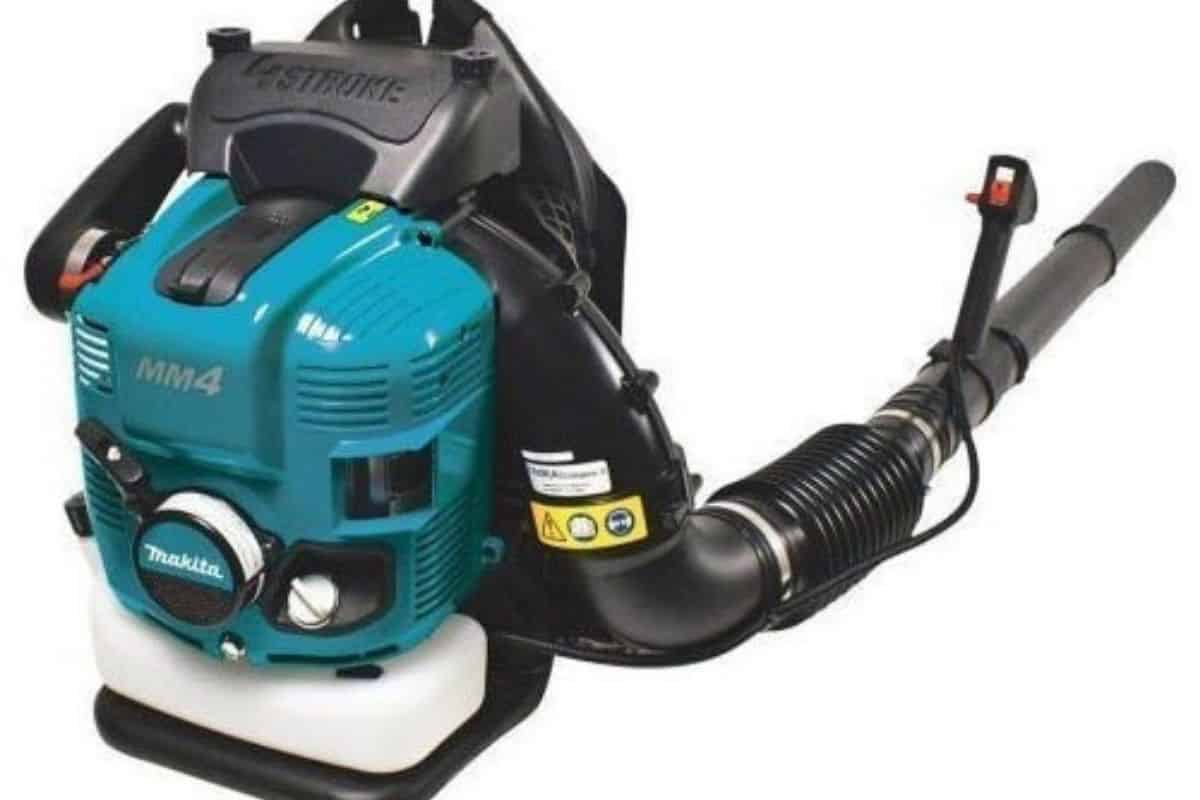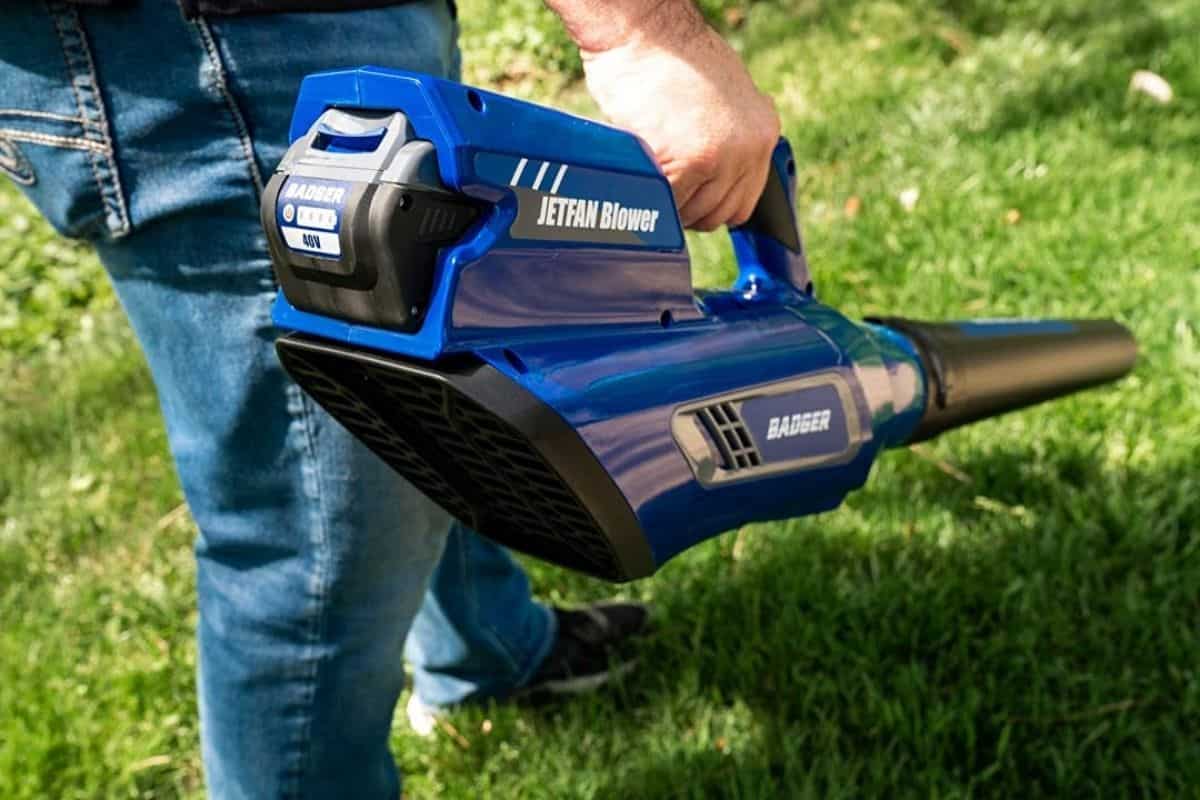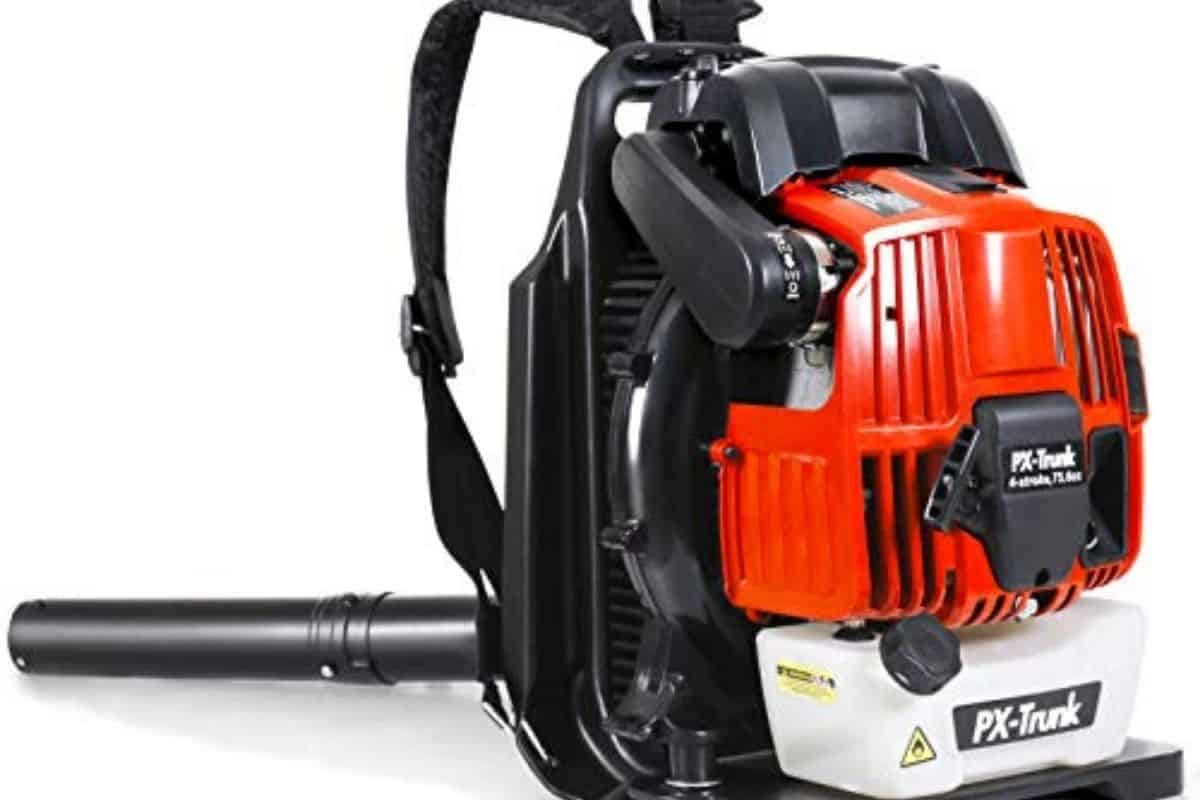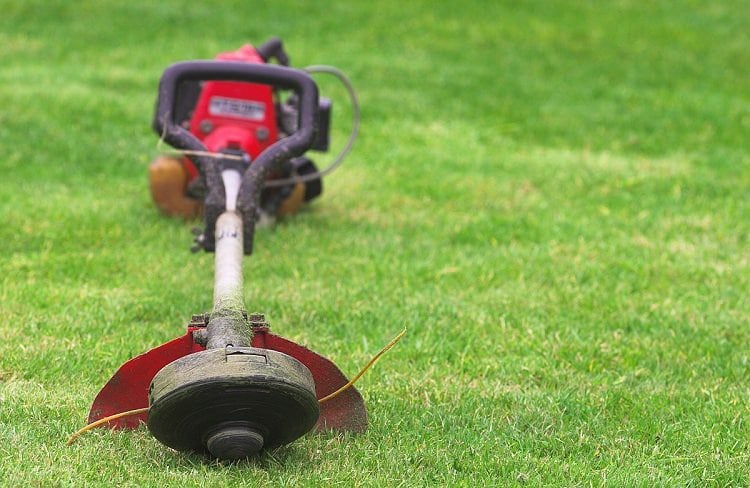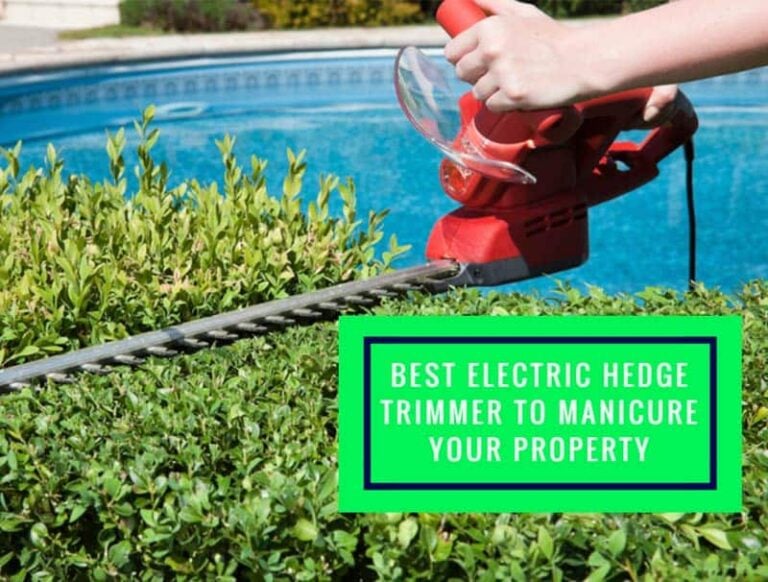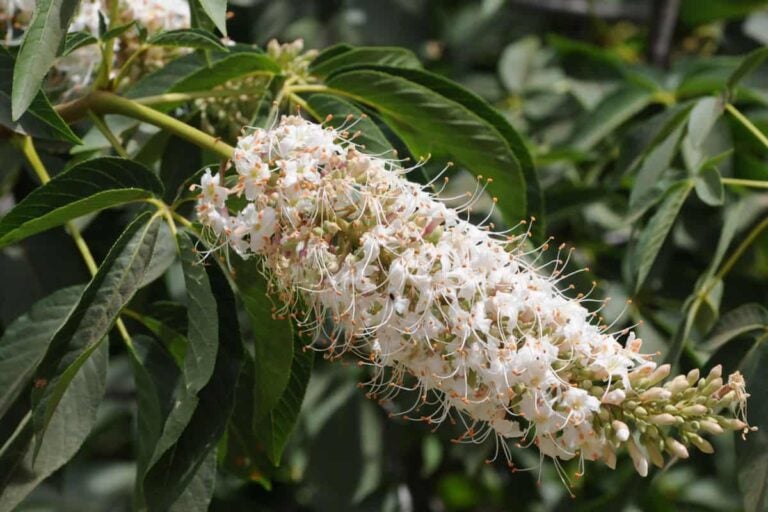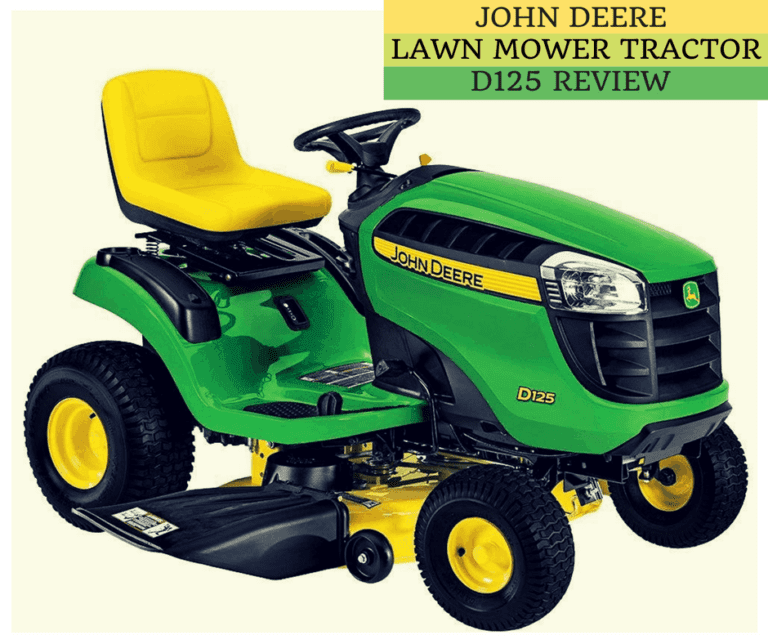The Best Backpack Leaf Blowers In 2022: Reviews & Buyer’s Guide
The changing of the seasons is a wonderful time of year, as we watch nature take its due course.
The weather in the sky, the smells in the air, the changing colors of the leaves, are all sensory delights that we experience throughout the year.
When is your favorite season? What’s your favorite time of year? Perhaps the blazing sun of mid-summer, or the freshness of a spring morn?
I love when Autumn is approaching. As the air cools from the summer heat, the rains start to appear again, the leaves start changing colors.
Luscious greens, deep reds, dusty browns, and mustard yellows, the colors of the leaves are gorgeous to look at.
However, these colorful beauties can wreak havoc in your yard, clogging guttering, soaking garden furniture, messing up your car, and even when walked onto your carpets!
As they fall to the ground, through either the seasonal change or strong winds, leaves seem to get everywhere, especially places you don’t want them!
So how can we deal with this unavoidable act of nature? Ah yes, the trusty rake! It has served us so well for generations.
Although these ancient tools do a great job, the emerging technology of leaf blowers may well have consigned rakes to the past.
Although there are different kinds and many models of leaf blowers, we will take a deep dive into the world of backpack leaf blowers.
What is a backpack leaf blower? It is a leaf blower that is either gas-powered or battery-powered, one which can be worn as a backpack when being used.
This gives the user more support, more comfort and control, as well as more power.
Read on to discover all about backpack leaf blowers, how they work, what their many parts do, what features they have, and also which ones are the best on the market today.
Husqvarna 350BT
Husqvarna Group was founded in 1689 in Sweden. 1689! The company started out making muskets and has gone on to continue growing over the past 333 years.
Now, their product range is incredibly diverse, as they produce goods including motorcycles, bicycles, kitchen appliances, sewing machines, hunting weapons, and outdoor products.
It’s this fantastic and unrivaled experience that aids Husqvarna in producing some top-quality garden products.
The 350BT is an impressive 2-stroke gas-powered leaf blower that’s chock-full of incredible features.
The X-TORQ engine technology increases fuel efficiency by up to 20% on gas blowers and reduces harmful exhaust emissions by up to 75%.
This powerful blower gives out an impressive 692.17 CFM as well as a mighty 180 MPH wind flow. The Air Purge function removes air from the carburetor and fuel system for easier starting.
Users have great control over the blower thanks to the cruise control and the ergonomic harness system.
Another great feature is the dampers between the engine and chassis to efficiently reduce vibrations, which make it a more comfortable user experience.
Pros
- X-TORQ engine technology for reduced emissions and improved efficiency
- 180 MPH (Miles Per Hour) air velocity
- 17 CFM (Cubic Feet per Minute) air volume
- Air Purge function for easy starting
- Cruise control & variable speed throttle
- Ergonomic harness & hip belt system for comfort and control
Cons
- Some users advised that regular maintenance may be required
This can also be purchased at Leaf Blowers Direct.
Echo Backpack Blower PB-770T
The Echo PB-770T is a phenomenal piece of equipment that offers a quality build and truly impressive performance.
It’s powered by a 63.3 cc 2-stroke engine that features variable speeds and useful cruise control.
The throttle is mounted on the tube for improved control, and the tube itself is flexible for improved handling.
This powerful engine is capable of creating an airspeed of an astounding 234 MPH, more than enough to clear away even the toughest and heaviest of debris.
It also packs a powerful air volume of 756 CFM, and I found that it was incredibly efficient.
The power is made easier to handle thanks to the padded backrest and shoulder straps, whilst the wide-angle tube rotation allows for easy maneuverability.
The unit also features a vented back pad for improved comfort and to stop you from overheating when using the blower.
Pros
- Powerful 63.3 cc 2-stroke engine with variable speeds and cruise control
- Translucent fuel tank for easy monitoring
- 234 MPH (Miles Per Hour) air velocity
- 756 CFM (Cubic Feet per Minute) air volume
- Comfortable and easy to handle
Cons
- Some reports of carburetor needing replacing after extended use
This can also be purchased at Echo.
Schröder SR-6400L
Robert Schröder founded the company in 1948 when he started producing precision machine parts.
The company has gone on to establish itself as a manufacturer of precision, high-quality and high-performance products.
The SR-6400L is a brilliant backpack leaf blower that is sure to give you performance worthy of the company’s reputation.
It weighs in at under 20 lbs, making it lightweight and easy to use for extended periods.
I also found it comfortable, thanks in part to the padded shoulder straps and back support.
It’s powered by a 53.3 cc 3.7 HP 2-stroke engine that produces an astounding 920 CFM in air volume, and a superb maximum air velocity of 230 MPH.
This makes the SR-6400L a truly high performing piece of machinery. The deal included a 5-year commercial warranty and 45 days 100% money-back guarantee.
Pros
- Maximum air velocity of 230 MPH (Miles Per Hour)
- 920 CFM (Cubic Feet per Minute) air volume
- Incredibly lightweight and comfortable design
- 5-year commercial warranty & 45 days 100% money-back guarantee
- 3 cc 2-stroke 3.7 HP engine
Cons
- Some users had difficulty starting the engine, though I didn’t myself
This can also be purchased at Schröder.
Makita EB5300TH MM4
Makita has been in operation in some form since it was founded in 1915 in Japan.
This rich experience combined with their high-quality construction has aided Makita in building up a strong level of brand recognition amongst users of power tools.
The EB5300TH is a superb piece of gardening equipment, combining solid, durable construction with a number of brilliant features.
The 52.5 cc MM4 4-stroke commercial engine is a step-up from many 2-stroke engines in terms of its performance and output.
It conveniently used straight gas and doesn’t need mixing like 2-stroke models, whilst it also helps the engine run quieter, reduces emissions and allows it to sit comfortably whilst idle.
The featured Mechanical automatic engine decompression consistently ensures quick and easy starting.
The blower produces a solid 516 CFM of air volume whilst also reaching air velocity of up to 184 MPH, a powerful combo for even the most steadfast of debris.
It features a large capacity replaceable air filter and the awesome tool-less handle adjustment for efficient adjustment on the fly.
Pros
- 5 cc MM4 4-stroke Commercial duty engine
- 516 CFM (Cubic Feet per Minute) air volume
- Maximum air velocity of 184 MPH (Miles Per Hour)
- No mixing of gas, use normal unleaded fuel
- Mechanical automatic engine decompression for quick and easy starts
Cons
- Some users reported issues with operating at full power after extended use
This can also be purchased at Max Tool.
Poulan Pro PR48BT
Poulan is actually a brand range within the Husqvarna Group, though it didn’t start out that way.
It was founded as the Poulan Saw Co. in 1946, changing hands a few times until Electrolux bought it out in 1984.
The Poulan branding is often used on outdoor products such as leaf blowers, lawnmowers, and chainsaws, and these are usually in the mid-range of pricing.
The Poulan Pro range is aimed further towards the top tier of the market, something of a ‘luxury’ brand.
Due to its connection to the Husqvarna Group, their products frequently share a lot of the same technologies and features.
The PR48BT is powered by a 48 cc 2-stroke engine, which features cruise control and variable speeds.
The blower is capable of blasting out air speeds of up to 200 MPH, as well as a respectable air volume of 475 CFM.
The design is lightweight and comfortable to wear thanks to the load-reducing harness and easily adjustable shoulder straps.
Pros
- 48 cc 2-stroke engine with cruise control
- Air velocity of up to 200 MPH (Miles Per Hour)
- 475 CFM (Cubic Feet per Minute) air volume
- Lightweight design for easy and comfortable use
- Built with Husqvarna technology
Cons
- Some users report trouble with consistent performance
This can also be purchased at Home Depot.
Husqvarna 150BT
The second Husqvarna featured in our list, the 150BT also shares many features of the 350BT model.
It similarly features the X-TORQ engine technology for reduced emissions and improved efficiency, though its performance metrics are a little different.
Although the air volume output is lower at 434 CFM, it’s maximum air velocity is a startling 251 MPH.
The Air Purge function ensures easy starting every time, whilst I found it comfortable to wear and use.
The ergonomic harness and hip belt system not only make it comfortable to wear, but also allow for much easier control of the blower.
The throttle is capable of various speeds, and the cruise control setting helps maintain smooth operation when in use.
The Auto Return Stop Switch automatically resets to the ON position to make it quick and easy to restart when needed.
Pros
- X-TORQ engine technology for reduced emissions and improved efficiency
- 251 MPH (Miles Per Hour) air velocity
- 434 CFM (Cubic Feet per Minute) air volume
- Air Purge function for easy starting
- Cruise control & variable speed throttle
- Ergonomic harness & hip belt system for comfort and control
Cons
- Some customers advised that repairs were needed quite often
This can also be purchased at Husqvarna.
Greenworks Pro BPB80L2510
A fantastic battery-powered backpack leaf blower from the team at Greenworks.
The company was founded in 2002 in Canada by Yin Chen, a key individual in the adoption of battery power in outdoor equipment.
An environmentally friendly alternative to gas-powered leaf blowers, this model still packs quite a punch.
With a maximum air velocity of 180 MPH and up to 610 CFM of air volume, this blower performed above my initial expectations.
The battery pack is fast charging in only forty-five minutes, though we recommend purchasing an additional battery pack too.
This is due to the run time being around twenty minutes, which may not be enough for your intended task.
The advanced brushless motor technology delivers more torque, runtime, and helps to extend the blower’s life span.
The blower also features variable speeds with cruise control, as well as a Turbo Button for when a little something extra is needed.
Pros
- Environmentally friendly rechargeable Lithium-ion battery pack
- 610 CFM (Cubic Feet per Minute) air volume
- Top airspeed of 180 MPH (Miles Per Hour)
- Variable speeds and cruise control
- Rapid charging in only 45 minutes
- Limited 4-year tool and battery warranty
Cons
- Running time is quite low compared to gas-powered, so be sure to purchase an additional battery pack
This can also be purchased at Walmart.
LawnMaster NPTBL31AB
The NPTBL31AB is a great piece of gardening equipment from the well-established brand of LawnMaster.
This model features a powerful 31 cc 2-cycle full crank engine and a 7.2V rechargeable lithium-ion battery.
It blasts out a maximum air volume of 470 CFM and a maximum velocity of 175 MPH, a combination sure to prove effective.
This model features a No-Pull electric start button that is good for 150 starts on only a single charge.
Controlling this machine is made smoother thanks to the automatic choke, variable speed throttle, and cruise control.
Comfort is improved due to the padded ventilation harness and anti-vibration engine mount.
Pros
- Powerful 31 cc 2-cycle full crank engine & 2V rechargeable Lithium-ion battery,
- Maximum air volume of 470 CFM (Cubic Feet per Minute)
- Maximum air velocity of 175 MPH (Miles Per Hour)
- No-pull electric start button
- Automatic choke, variable speed & cruise control
- Anti-vibration engine mount
Cons
- A minority of users spoke of battery charging issues
This can also be purchased at LawnMaster.
Wild Badger Power WBBPBL43
The WBBPBL43 is powered by a 43 cc 2-stroke gas engine that produces a maximum air volume of 550 CFM and a respectable maximum air velocity of 190 MPH.
This makes the Wild badger suitable for all kinds of interior and exterior needs.
The unit comes in at under 20 lbs, making it lightweight and easy to use over longer periods of time and greater distances.
The throttle has variable speeds as well as cruise control for quick and easy adjustment on the go.
The comfortable straps and multi-material suspension system ensure the weight of the unit is distributed evenly between the user’s shoulders and hips.
It comes with a truly outstanding and industry-leading 6-year warranty, ensuring that any issues which may arise will be taken care of by the manufacturer.
Pros
- Powered by a 43 cc 2-stroke engine
- Maximum air volume of 550 CFM (Cubic Feet per Minute)
- Maximum air velocity of 190 MPH (Miles Per Hour)
- Lightweight and comfortable design
- 6-year manufacturers warranty
Cons
- Some parts are plastic, which have broken for some customers
This can also be purchased at Garden Season.
Gdrasuya Backpack Leaf Blower
One of the models from the cheaper end of the market, the Gdrasuya backpack leaf blower still provides good, useful leaf blowing functionality.
It runs on a 65 cc 3.6 HP 2-stroke engine that is capable of producing a maximum air velocity of 210 MPH, fantastic for a model at this end of the market.
The engine is air-cooled to prevent overheating and allow for extended use in one session. It has a large fuel tank capacity of 1.7 liters, though as a 2-stroke engine, it does require the special mixed fuel.
Pros
- The cheaper end of the market
- 65 cc 3.6 HP air-cooled engine
- 7-liter fuel tank
- Maximum air velocity of 210 MPH.
Cons
- Build quality not as high as more expensive options
This company is an Amazon seller only for the U.S. market.
Buyer’s Guide
Introduction To Backpack Leaf Blowers
Most leaf blowers fall into two categories. The first category is the big ones that come with built-in vacuum systems.
These typically range anywhere from 15 to 48 inches long. They often weigh between 10 and 20 pounds.
While these blowers can handle the heavy leaves of large trees, not everyone wants to use them.
This type of blower is great for cleaning out driveways and sidewalks that haven’t been swept yet, or for clearing debris after storms.
It can even suck leaves off rooftops if you need to clear a place of snow. These types of blowers are usually very durable, but they can cost a lot of money.
The second category includes smaller versions of garden hoses, such as the ones sold under the name LeafBlaster.
These models only have a manual power switch and typically consist of a PVC tube attached to a metal wand. Most are made to fit inside a backpack, so you can easily carry them with you.
Many of these models come with an attachable shoulder strap. Because of their size, these tools are ideal for use indoors.
They can easily reach up into corners or even climb over furniture to blow away leaves from upper shelves of bookcases or coffee tables.
Since they work manually, however, while they are easy to store and transport, they don’t provide nearly the same level of strength or durability as their larger counterparts.
Their usefulness depends entirely upon their flexibility. If you plan on using them mostly on indoor tasks, then you probably won’t find any better deals than this.
However, if you plan on using yours outdoors as well, then we recommend looking elsewhere.
Before you buy one, you should think about whether you will be using a leaf blower as much indoors as you will outdoors.
If you only have outdoor access, or you’re planning on buying a different model primarily for indoor use, then you can skip reading ahead.
If you plan on doing both, though, there are other considerations, which we’ll discuss below.
When it comes time to choose a leaf blower, we recommend starting by considering how far you expect to travel with it.
If you plan on traveling more than 50 feet, you really shouldn’t consider purchasing something less than 12 inches in diameter.
If you’d rather save money, however, then you can opt for a smaller version.
A bigger blower just gets in the way when it comes to moving through tight spaces. It can get stuck or damage walls and ceilings.
A good amount of weight isn’t a problem for most backyard enthusiasts.
But if you decide to purchase one, then you’ll want to make sure it has enough storage space to keep your supplies safe.
For example, some models are designed with separate compartments specifically to hold extra leaf bags. You could also use a backpack to help stabilize the unit.
MPH & CFM
When looking at different models of a backpack blower, you will notice that the manufacturers list the MPH and/or CFM for each model.
These are indicators of the power of the blower, but what do they stand for, and which is more important?
MPH stands for Miles Per Hour, though don’t expect to be racing around your yard anytime soon! In this context, MPH is a measurement of the airspeed the model is capable of producing.
But what is the airspeed? It means how fast the air coming out of the blower is traveling, so the higher the MPH the faster the airspeed.
CFM stands for Cubic Feet per Minute, which measures not the speed but the volume of the air that the blower is putting out. The higher the CFM, then the higher the volume of air that the blower can produce.
Both of these are significant metrics by which to measure the power of a blower, but which is more essential?
This entirely depends on what you intend to use the leaf blower for and the environment in which you will use it.
If you’re only intending to clean up leaves and light debris, but need to cover a large area, then a model with a higher CFM rating will be ideal.
If, however, you may use it for additional tasks and heavier debris, you will need more power, so look for a model with a high MPH performance.
Many models, especially those in more premium ranges, will have a high MPH output as well as an impressive CFM rating.
Finding a model that has a good balance of these can sometimes cost a little more, but as with many products, sometimes that little extra money goes a long way.
Leaf Blower Features
Speed Control
The ability to change the speed will allow for improved performance and allow the user to manage the speed based on both the task at hand and the environment they are working in.
Electric blowers feature different speed settings, whilst gas-powered blowers feature a variable throttle to achieve the same result.
Working in open areas with hard surfaces, the user can knock their blower up to full speed without any worries.
If working in a more compact environment or somewhere in which there is much loose debris, then carefully managing the speed will prevent any collateral damage.
Shut Off Switch
As with many power tools or vehicles, an easy-to-access or emergency shut-off switch is a great safety feature on a backpack leaf blower.
This allows the user to quickly shut off the electric or gas motor when needed to stop any potential issues from escalating.
Extra Grip
Some models feature an additional grip to allow for greater control and more evenly distributed weight.
Nozzle Styles
Blowers usually come with either a rounded or flattened nozzle, though many models will come with adjustable nozzles. Why would you need different nozzles?
Simply put, different nozzles blow the air in different forms, making it more or less suitable for different tasks.
If cleaning up loose leaves on sturdy ground, then the flattened nozzle is ideal, whilst the round nozzles are great for working out debris from rough ground.
Battery Power
As with any product, there is a wide range of battery power featured across the selection of backpack leaf blowers.
These offer different levels of performance and run time from a single charge with electric blowers.
Look for those models with long-lasting and high-performing lithium batteries, as these typically run for longer from a single charge.
Some models may feature changeable batteries, which can greatly improve the amount of time you can spend working without having to wait for charging.
If you’re intending to have a full day in the garden or yard, then having to stop often to recharge is not preferable at all.
Fuel Tank
Many gas-powered models feature a translucent fuel tank, which makes it super easy to check how much fuel you have left and therefore how much longer you can continue to work before needing to refuel.
Leaf Blower Parts
Leaf blowers feature a number of important technical and design features. Let’s look at these below:
Motor
The motor drives the blower fan, which pushes air through the tool. Some models produce a high-speed stream that resembles a powerful lawnmower, whereas others create a lower-powered stream that is more suitable for blowing leaves around.
Air Filter
Many people like to put a filter between the motor and the air intake hose to prevent dust from entering the engine and causing overheating. Others prefer to leave it out as a cheaper alternative would be cleaning the motor regularly.
Hose
This is where you connect the air tank to its corresponding outlet. Some designs include a “coupler” that allows you to detach the two units without losing pressure. Others simply utilize a single connection point.
Handgrip
This part helps you control the blower. Some models allow you to adjust the speed, while others offer a fixed rate of airflow. However, regardless of the design, the grip should feel comfortable in your hand and ideally have a low center of gravity to ensure stability.
Battery
Of course, every leaf blower needs batteries! Most of the time, these items last longer than you might imagine.
When you start comparing prices, however, you may notice that batteries are usually priced higher than the cost of the rest of the kit.
We advise buying at least three sets. That way, you always have spare batteries in case you need to replace a discharged pack.
Cleaning Brush
Once in a while, you may need to clean off the leaves that stick to the backside of the blower fan. Unless you happen to own a paintbrush, it’s unlikely you’ll be able to remove them using the included squeegee.
Instead, you’ll need a small set of brushes specially designed to remove sticky gunk. There might also be a plastic brush on board that will help dislodge stubborn debris.
Detachable Nozzle
You don’t always need to use the entire length of this attachment; sometimes a shorter portion works best. In any event, it’s worth spending an additional few dollars for a detachable nozzle.
Not only does it make the device easier to store, but it will provide even better balance during operation.
Sturdiness
Although it sounds obvious, you must take care not to drop a leaf blower. Fortunately, many manufacturers build their products with extra strength.
They also include bumpers to protect against unexpected impacts, such as those created by children playing nearby.
Size
Ideally, a leaf blower won’t block your driveway or your home’s entrance. As such, it should be no larger than 6 feet long by 2 feet wide (depending on the model).
If possible, we recommend purchasing one that measures about 3 feet by 1 foot.
These dimensions will allow you to get maximum coverage without affecting visibility, comfort, and convenience.
At the same time, they aren’t likely to cause serious damage to surrounding properties or buildings.
Noise Level
For many, the loud whine produced by most leaf blowers can be a deal-breaker. Thankfully, you should find variations that run quietly enough to avoid disturbing neighbors or attracting unwanted attention.
Power Source
All leaf blowers work with some kind of power source. A battery might be convenient because you never have to worry about replacing it. Alternatively, you may choose to plug into a wall socket.
Just make sure that whatever type of power supply you pick has sufficient capacity to satisfy your needs.
Rechargeable
After using a leaf blower for more than an hour or so, you may want to recharge it before continuing to use it again.
Many power packs are now compatible with USB ports, meaning you can easily charge multiple devices at once.
Range
Even if you purchased a fully-charged pack, it may still take several hours for it to reach full capacity. If you plan to spend a lot of time outdoors, you’ll want to look for a pack that has strong battery life.
Durability
It’s wise to purchase a leaf blower that comes from a reputable manufacturer. This helps ensure that it’s built to withstand the rigors of outdoor use.
Over time, you’ll probably find yourself using it much more frequently. At times like these, you’ll benefit greatly if you invest in a durable backpack leaf blower.
Leaf Blower Safety
Although using a leaf blower is not a particularly dangerous task, there are many ways in which one could cause an accident, hurt themselves, or damage the blower itself.
So how can you stay safe when using a leaf blower?
Clothing
Be sure to wear pants and long sleeves when using the blower to keep yourself clean of flying dirt and debris.
Wear suitable footwear such as work boots, or those with non-slip soles, essential if you’re dealing with wet conditions or a huge build-up of slippy leaves!
Hearing Protection
Blowers can make a pretty loud noise, which can be both uncomfortable and cause permanent hearing loss over time.
Make sure that you wear either earmuffs or earplugs and ensure that they can withstand a high volume of noise.
Eye Protection
As you use the blower, you are likely to find all sorts of debris, dust, and dirt flying around. You want to avoid getting anything in your eyes that could irritate it or even cause damage if the debris is a harder material.
Lung Protection
If you intend to use the blower in dusty or filthy conditions, it’s a good idea to protect your respiratory system.
Breathing in dust, dirt, sand, or other debris could leave you feeling uncomfortable and cause all sorts of problems.
To prevent this from happening, be sure to wear a respirator or dust mask, depending on the condition of your working environment.
Refueling Gas-Powered Blowers
When you are using a gas-powered blower and the gas runs out, you should wait before refueling. Allow at least 15-20 minutes for the motor to cool down.
Not only could you be easily burnt by the heat, this heat could also cause a fire by igniting gas vapors.
Frequently Asked Questions
What Else Can You Use Leaf Blowers For?
Leaf blowers are powerful and high-performing pieces of equipment, and they don’t only have to be used for blowing the leaves off your driveway.
So what else can you use a leaf blower for? Let’s take a look at a few ideas below.
Cleaning Out The Car Interior
If, like me, you can sometimes end up with a messy car, then cleaning it out has never been easier!
Often debris, filth, soil, dog mess, and all kinds of undesirable muck can find its way into your car.
This is especially the case if you live somewhere in the countryside, like going out on treks, or you have the pleasure (and pain?) of having children or pets.
Clear out any important possessions and then blast that muck straight out of the car doors!
Clearing Up Snow
If you live somewhere that gets snow year-round or seasonally, you will know the challenge of clearing snow just to get to work in the morning.
High-performing leaf blowers can be really handy in this situation! If the snow is light and there isn’t a huge volume, see how quickly you can clear your path or driveway with your blower.
Cleaning Out The Gutter
Gutters can become easily blocked up through the accumulation of loose leaves, which may cause water to pour from the side of the guttering.
If these leaves are allowed to work their way through your pipes, then these could become completely blocked up.
Give your gutters a blast with the leaf blower, but do this before cleaning up the area below, as the leaves could shoot all over the place.
Car Washing
Washing your car can be an arduous but rewarding task, though it can be incredibly frustrating to see smears of leftover detergent on the car afterwards.
Combat this by using your blower, starting from the roof, to blow off any excess water and detergent from the exterior of your car.
Rain, Rain, Go Away
If you’ve had a heavy downpour, your outdoor areas are probably going to be pretty soaked. You can clear away any excess rainwater from your outdoor furniture, patio, decking and paths.
Cleaning Garden Tools
Lawnmowers and grass trimmers can become caked in the grass, which then hardens and becomes a challenge to remove.
Avoid this issue by blasting a flow of air through the engine and external parts of this equipment after use. Make sure any tools you intend to clean are turned off before cleaning them!
Should I Buy A Gas-Powered Or Battery-Powered Blower?
Backpack leaf blowers are gas-powered or battery-powered, and this can leave many unsure of which to choose.
Below, we take a look at the strengths and weaknesses of both to help you decide which is right for your needs. :
Gas
These come with either a 2-stroke engine or a 4-stroke engine. 4-Stroke engines are typically heavier, and they run on regular fuel.
2-stroke engines are generally lighter, but they require a different kind of fuel to run.
They require a mixture of gas and oil, which can be either mixed manually, or, for more convenience, can be brought pre-mixed and ready to use.
Gas-powered blowers (2 and 4-stroke) are typically heavier than their battery-powered counterparts.
Battery Powered
These are more environmentally friendly as they run off electricity, though it’s often the case that they cannot run for as long as gas-powered blowers.
Many models feature additional or backup batteries, which help make up for the decreased run time.
These are also much quieter than gas-powered blowers, and they won’t give off a strong smell of gasoline when used.
Final Thoughts
As with most gardening tools and utensils, leaf blowers are likely to be used more frequently at certain times of year.
This means the blower can typically sit idle for long stretches, but what’s the problem with that?
Well, the motor can easily become blocked up by leftover fuel, meaning that it may not start well on its next use, if it at all!
So, how can we stop this happening and keep our blower in the best condition for our next use?
As mentioned previously in the ‘Gas vs Battery’ question above, it’s possible to run a 2-stroke blower engine on pre-mixed or manually mixed fuel.
This pre-mixed fuel may be more expensive, and it’s not essential to be used each time, however it does contain additives to prevent the engine from blocking up.
As such, it’s sensible to use this for any last use before the blower goes into storage. A more thorough method is to ensure that all the fuel in the blower is used up before you store it.
Simply use the blower until the fuel runs out and the engine stops.
If you are storing it for a short time as you know you have an upcoming use, then you don’t need to empty it of all its fuel.
However, be sure to store it upright so that fuel doesn’t leak out, and the engine doesn’t get as easily clogged.
So, where can you store a backpack blower?
- Buy a pre-made specially designed storage rack from the manufacturer.
- Hang it up on a pre-existing wall rack in your workshop, shed, or garage.
- You can hang it from a hook that is placed either on the wall or on the ceiling.
- Place it upright on your workshop shelves and be sure to give it ample space.
- If you have storage below the worktop of your workbench, this is also a suitable location.

